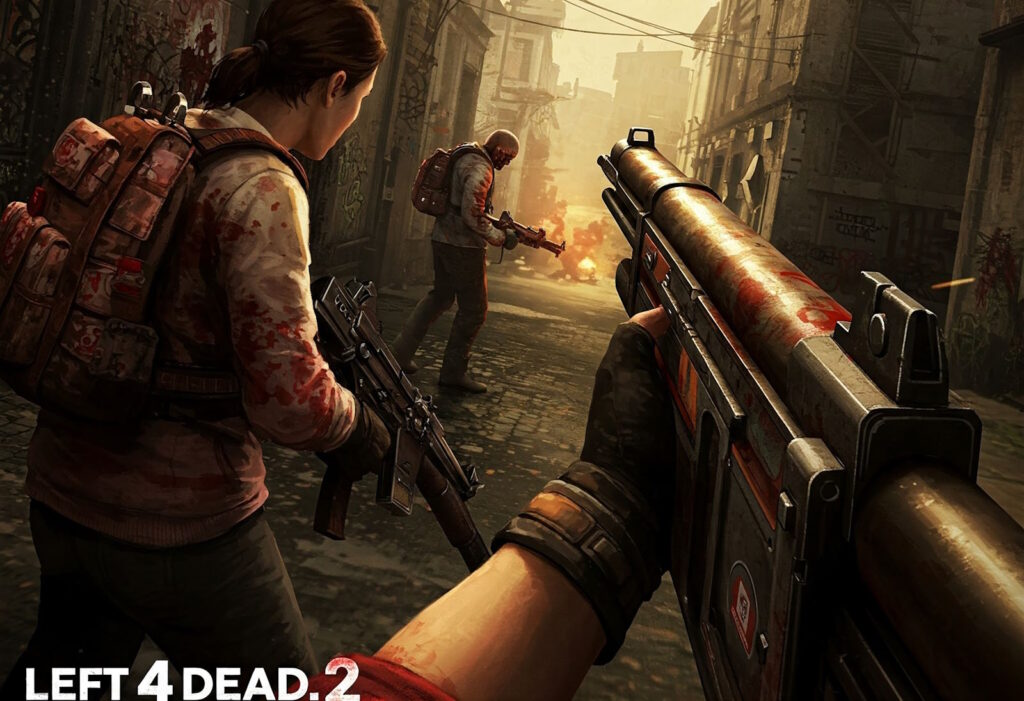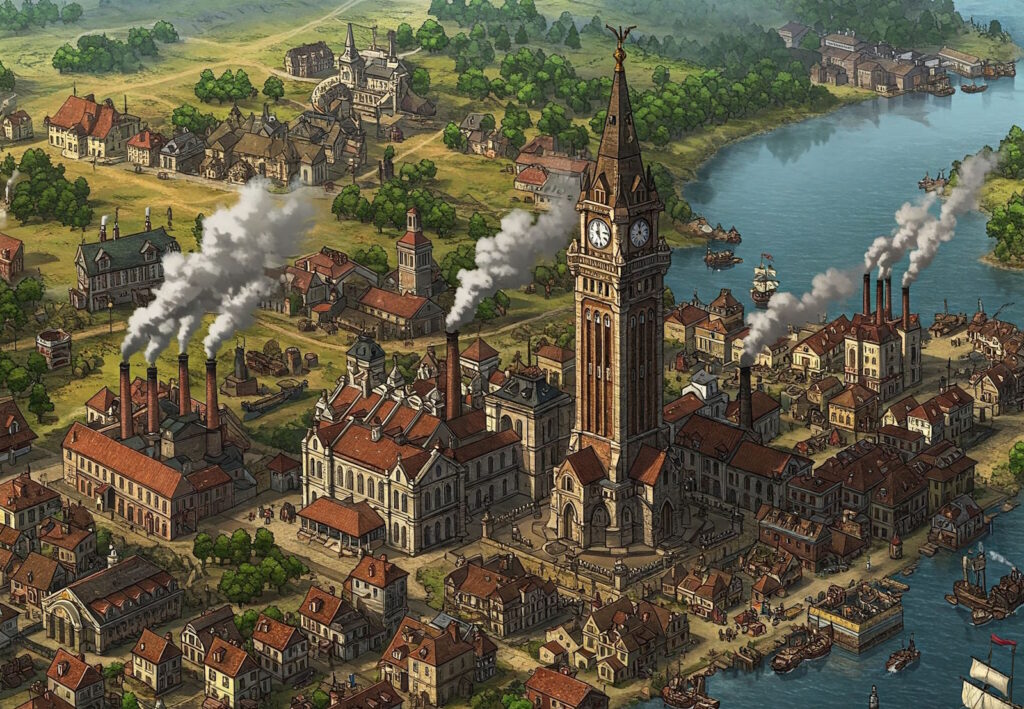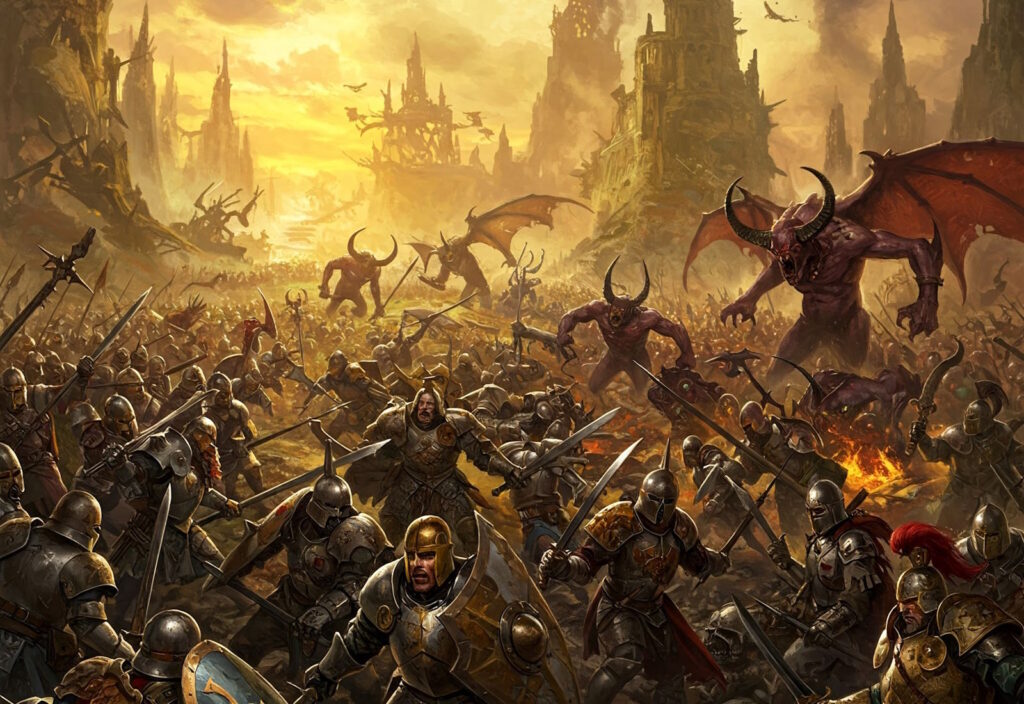Introduction to Left 4 Dead 2
Released in 2009, Left 4 Dead 2 is a cooperative first-person shooter developed by Valve Corporation, renowned for its innovative gameplay mechanics and immersive zombie apocalypse setting. As a sequel to the original Left 4 Dead, this title expands on its predecessor’s successful formula while introducing new characters, campaigns, and game mechanics that have become pivotal in the cooperative shooter genre.
Left 4 Dead 2 thrusts players into a harrowing environment where they must navigate various scenarios filled with hordes of zombie-like creatures. The game stands out due to its distinct cooperative mechanics, which emphasize teamwork and strategy. Players can band together in groups to effectively tackle challenges, sharing resources and supporting each other during intense encounters. This focus on collaboration not only enhances the gameplay experience but also fosters a sense of community among players, echoing the camaraderie often found in survival situations.
The significance of Left 4 Dead 2 in gaming history cannot be understated. It played a crucial role in shaping modern cooperative gameplay and has laid the foundation for future titles in the zombie shooter genre. By integrating elements like dynamic difficulty adjustments and the AI Director, which alters gameplay based on players’ performance, Left 4 Dead 2 ensures that no two playthroughs are ever the same. This adaptability keeps players engaged and has solidified the game’s reputation as a classic among enthusiasts and casual gamers alike.
In light of its innovative mechanics, compelling narrative, and critical reception, Left 4 Dead 2 remains a benchmark for cooperative zombie shooters. Its influence is evident in many contemporary games, solidifying its status as a landmark title in the gaming industry.
Gameplay Mechanics and Features
Left 4 Dead 2 offers a rich gameplay experience that revolves around cooperative play, bringing together teams of up to four players battling against hordes of zombies. This emphasis on teamwork is crucial as players must rely on each other to survive intense encounters with both common and special infected. Each character possesses unique dialogue and personality traits, enhancing the emotional investment in the game.
One of the standout features of Left 4 Dead 2 is its diverse array of special infected. These unique enemies possess distinct abilities that challenge players in various ways, requiring strategic planning and coordination to overcome. For instance, the Smoker can incapacitate players with its long tongue, while the Charger can charge through teams, causing chaos and disarray. This variety in enemy types keeps gameplay fresh, ensuring that no two encounters are the same.
A hallmark of the game is the AI Director system, a groundbreaking feature that dynamically adjusts the level of difficulty based on player performance. This ensures a consistently engaging experience, as the game can introduce more zombies or special infected based on the players’ successes or failures. Additionally, this system enhances replayability by modifying item placements, allowing for varied experiences during each session.
Beyond its cooperative campaign, Left 4 Dead 2 includes several game modes, such as Versus and Survival. In Versus mode, players can take on the roles of both survivors and infected, adding a competitive edge to the gameplay. Survival mode challenges players to endure as long as possible against relentless waves of the undead. Furthermore, a vast selection of weaponry, ranging from melee options to firearms, empowers players to customize their approach to combat. This depth in gameplay mechanics, along with the robust character selection, solidifies Left 4 Dead 2’s status as a premier zombie cooperative shooter.
Map Design and Variety
The map design in Left 4 Dead 2 is a cornerstone of its gameplay, showcasing a remarkable diversity that enriches the player’s experience. Each campaign introduces players to unique environments, ranging from the urban landscapes of Louisiana to the eerie serenity of the countryside. This variety allows for a distinct atmosphere and offers different strategic opportunities during gameplay. Each map is meticulously crafted to encourage cooperative play, with choke points, open areas, and verticality adding layers of complexity to encounters with the infected.
For instance, in the ‘Dead Center’ campaign, players navigate through a mall, which features interiors that provide both cover and pitfalls for unsuspecting survivors. The layout invites teams to devise strategies that emphasize teamwork, as players must balance offense with caution when moving between stores. Conversely, the ‘Swamp Fever’ campaign presents a more linear path through a dense bayou, where visibility is limited, and lurking threats can arise from every direction. Such environments require players to adapt their tactics, emphasizing communication to survive in settings that feel immersive and threatening.
Navigating these maps successfully is essential for survival, and a few tips can enhance your overall gameplay. It is crucial to familiarize oneself with the layout; recognizing key areas to regroup or find ammunition can make the difference between life and death. Additionally, understanding the behavioral patterns of the infected helps players anticipate attacks, allowing for better positioning during intense encounters. Each map in Left 4 Dead 2 thus serves not only as a setting but as a critical element of the narrative, weaving together the story of survival and cooperation in a world overrun by zombies. The strategic implications of map design in this game are profound, making each playthrough uniquely engaging and challenging.
Character Development and Lore
In the realm of cooperative zombie shooters, Left 4 Dead 2 stands out not only for its gameplay but for the depth of its characters and the intricate lore surrounding the zombie apocalypse. The game features four main survivors: Coach, Ellis, Nick, and Rochelle, each uniquely crafted with distinct backstories and personality traits that enrich the narrative experience. Coach, an ex-football coach, embodies leadership and a paternal instinct, often urging the group forward with motivational quips. Ellis, a young mechanic with a penchant for storytelling, brings a light-heartedness to the dire situation. His upbeat nature often provides comic relief, emphasizing the importance of camaraderie in the face of overwhelming odds.
Nick, a suave con artist, offers a contrasting perspective with his cynical outlook and sharp wit. His character showcases the complexities of human nature in desperate circumstances, highlighting how individuals cope differently under pressure. Finally, Rochelle, a news reporter, represents the voice of awareness amidst chaos, using her intelligence and resourcefulness to navigate through the apocalyptic landscape. Each character’s development is interwoven with rich dialogue and interactions that enhance the overall experience, allowing players to form emotional connections with them.
Alongside the survivors, the game introduces an array of special infected, each possessing unique abilities that contribute to the game’s dynamic combat scenarios. These characters, such as the tank and witch, not only serve as formidable foes but also expand upon the lore of the viral outbreak. The infected are depicted as former humans, transformed into monstrous versions of themselves due to the parasitic nature of the infection, which prompts players to reflect on the fragility of humanity in dire situations. The lore surrounding the outbreak adds a layer of depth, illustrating how society crumbles under the weight of catastrophe, making every encounter in Left 4 Dead 2 a testament to human resilience.
Community and Modding Culture
Since its release in 2009, Left 4 Dead 2 has cultivated a vibrant and dedicated community, which has significantly contributed to its enduring popularity. One of the most remarkable aspects of this community is its commitment to creating fan-made mods and custom campaigns. These mods have not only extended the lifespan of the game but have also enriched the gaming experience for both new and veteran players.
The modding culture surrounding Left 4 Dead 2 thrives due to the game’s open architecture, which allows users to easily create and share their content. This feature has empowered countless players to develop their own maps, characters, and gameplay mechanics, contributing to an ever-evolving library of content. Popular mods such as “Cold Stream,” which introduces a new campaign, and “The Last Stand,” a fan-designed survival map, stand out as prime examples of how user-generated content can enhance the core experience of the game. These mods not only introduce fresh challenges but also tap into nostalgia, reimagining classic horror elements that players have come to love.
Moreover, mods that focus on graphical updates, such as “Improved Graphics Mod,” breathe new life into the game by updating textures and enhancing visual fidelity. This has allowed players to enjoy Left 4 Dead 2 in a fresh light, demonstrating the community’s dedication to maintaining the game’s relevance in a rapidly advancing gaming landscape.
The collaborative nature of the Left 4 Dead 2 community fosters a sense of camaraderie. Players frequently come together to share their work, offer feedback, and even collaborate on projects, which has resulted in a rich tapestry of content. The continued interest in modding showcases not only the flexibility of the game itself but also the passion of its player base, ensuring that Left 4 Dead 2 remains a centerpiece in the co-op shooter genre.
Comparison with Other Zombie Shooters
When evaluating zombie shooters, particularly Left 4 Dead 2, it is vital to consider how it stands out against other popular titles, including Dead Rising and Dying Light. Each of these games presents its own interpretation of the zombie apocalypse, yet Left 4 Dead 2 uniquely excels in its cooperative gameplay dynamics. This multiplayer experience offers seamless coordination among players, a feature that enhances engagement and camaraderie. Players must work together to traverse hordes of zombies, creating a sense of urgency and shared accomplishment that is often less pronounced in single-player experiences or in other games.
In terms of pacing, Left 4 Dead 2 maintains a rhythm that balances moments of intense action with strategic pauses, allowing players to regroup and leverage their surroundings. This consistent pacing is a hallmark of the game’s design, enabling players to remain immersed in the survival horror atmosphere while maintaining a manageable level of chaos. In contrast, titles like Dead Rising focus more on a sandbox approach with varying missions and objectives, which can detract from the continuity of the survival experience. Dead Rising’s expansive world allows for exploration, but may not provide the same level of cooperative thrill as its counterpart.
Dying Light, another contender in this genre, introduces parkour mechanics that enable players to navigate urban environments fluidly, though this aspect can sometimes shift focus from the cooperative experience to personal agility and skill. While it offers a rich single-player narrative, the cooperative functionalities can feel secondary, which diverges from what players have come to expect from a game emphasizing teamwork. Overall, while all these titles have their merits, Left 4 Dead 2 remains a benchmark for cooperative zombie shooting, continued by its optimal player engagement and an exhilarating pacing that resonates with gamers seeking a strong multiplayer experience.
Enduring Popularity and Legacy
The enduring popularity of Left 4 Dead 2 can be attributed to various factors that solidified its status in the gaming community. Released in 2009, the title became an immediate favorite among players, combining fast-paced action with cooperative gameplay to create an engaging experience. Its unique blend of player dynamics fosters teamwork, requiring players to communicate effectively to survive waves of relentless zombies. This essential aspect of cooperative play encourages camaraderie, resulting in a loyal fanbase that spans over a decade.
Left 4 Dead 2’s legacy is further supported by the seamless integration of various gameplay elements. Each character possesses distinct traits, allowing players to adopt different strategies tailored to their play styles. The variety of campaigns, infected types, and difficulty levels has contributed to unparalleled replayability, ensuring that players return time and again to relive the thrilling encounters. Its inventive use of procedurally generated elements and AI Director means that players experience something unique every session, further captivating new audiences.
The game has also influenced a myriad of titles in the zombie-shooter genre. Developers have drawn inspiration from Left 4 Dead 2’s mechanics and atmosphere, resulting in innovations in cooperative gameplay and multiplayer storytelling. Games such as Back 4 Blood directly acknowledge their roots in Left 4 Dead 2, which showcases the franchise’s continued relevance in the industry.
Even after many years, new players are continuously joining the Left 4 Dead 2 community, thanks in large part to its accessibility on multiple platforms and frequent discounts during sales. The game’s dedicated modding community also contributes significantly to its longevity, providing fresh content and enhancing gameplay, thus encouraging renewed interest. In summary, the unique gameplay mechanics, strong community support, and significant influence on the gaming landscape solidify Left 4 Dead 2’s place as a classic co-op shooter that resonates with both old and new players alike.
Tips and Strategies for Beginners
For newcomers to Left 4 Dead 2, navigating the intense atmosphere of this cooperative zombie shooter can be challenging. However, by employing effective strategies and adhering to essential tips, beginners can enhance their gameplay experience significantly. The foundation of success in this game lies in teamwork, communication, and resource management.
First and foremost, teamwork is critical. Players should always stick together and avoid straying from their group. Moving as a cohesive unit not only increases individual safety but also enables players to support each other more effectively. Reviving teammates and sharing resources can turn the tide during critical moments, so staying close is essential.
Communication plays a vital role in ensuring that all team members are on the same page. Utilizing in-game voice chat or external communication tools can help players coordinate their strategies, call out enemy locations, and provide updates on health status. It is advisable to use clear and concise language, which aids in reducing confusion during intense encounters with zombies.
Resource management is another important aspect that newcomers must master. Players need to be vigilant in conserving ammunition and health packs. Avoid wasting ammo on weaker zombies; instead, save powerful weapons for more significant threats like Special Infected. Players should also prioritize healing when necessary, ensuring that health items are used strategically, especially before boss battles.
Finally, making the most of the available weapons can greatly improve the survival chances. Beginners should experiment with various firearms and melee weapons to determine their comfort levels and preferences. Learning the strengths and weaknesses of each weapon type will allow for better decision-making during gameplay, making it easier to fend off unpredictable zombie hordes.
In conclusion, by focusing on teamwork, efficient communication, wise resource management, and effective weapon usage, beginners can quickly learn the ropes of Left 4 Dead 2 and enjoy a more fulfilling gaming experience. With practice and adherence to these strategies, new players will find themselves better equipped to tackle the challenges presented by this thrilling co-op shooter.
Conclusion: Why Left 4 Dead 2 Remains a Classic
In the realm of cooperative gaming, Left 4 Dead 2 stands out as a quintessential example of how a title can resonate with players over an extended period. The game’s unique design encourages teamwork and strategic thinking, allowing players to navigate through a richly crafted world filled with diverse and challenging undead adversaries. This emphasis on collaboration has forged an unbreakable bond among players, fostering an enduring community that actively contributes to the game’s longevity through mods, discussions, and fan-driven initiatives.
Moreover, the variety of campaigns and game modes within Left 4 Dead 2 ensures that the experience remains fresh and engaging. Each campaign offers different environments, objectives, and challenges, appealing to players who seek both adrenaline-fueled action and varied gameplay dynamics. The introduction of advanced AI systems provides a dynamic gaming experience that adapts to players’ actions, contributing to a heightened sense of suspense and excitement that is hard to find in many contemporary titles.
The game’s accessibility further adds to its appeal, as it welcomes both casual gamers and serious enthusiasts alike. It offers a balanced learning curve, allowing new players to quickly grasp the fundamental mechanics while still offering depth for seasoned veterans. The mixture of humor and horror in its narrative and design enhances the overall enjoyment, making it a game that can be revisited multiple times without losing its charm.
Ultimately, Left 4 Dead 2 has not just held its ground in the Zombie co-op shooter genre; it has set a benchmark that influences countless other games. Its lasting impact and dedicated fanbase reaffirm its status as a classic, ensuring that it remains relevant even in an ever-evolving gaming landscape. This enduring recognition is a testament to the game’s compelling design and its ability to create unforgettable experiences among friends battling the apocalypse together.



